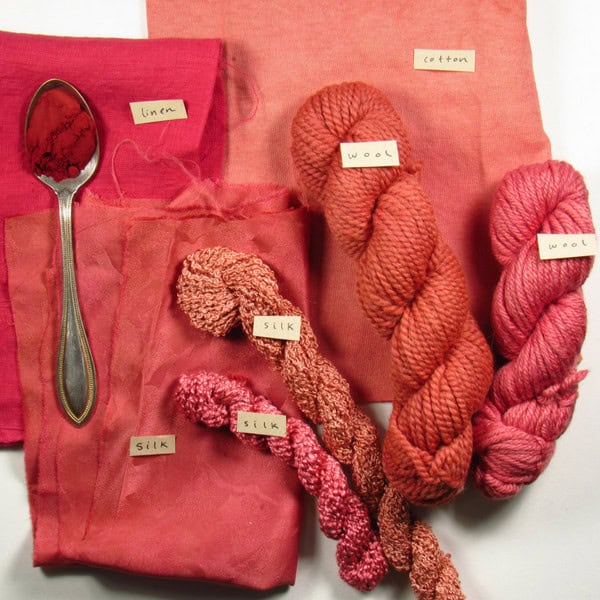
This week: Quebracho rojo gets the spotlight and microwaving wool?
Every week, we are emailed with questions from our natural dye community asking simple and complex questions that we thought might be worth sharing. Of course, all of your burning questions are answered by natural dyer in chief, Kathy Hattori, Founder of Botanical Colors.
I’m in love with quebracho rojo but I’m having trouble getting darker shades with my hemp/ cotton blend. Any tips would be fantastic!! Thank you! I’m using aluminum acetate as my mordant.
Quebracho is actually considered a lighter tannin-based dye, so it does not have the tinctorial strength like other dyes such as lac or madder. It’s possible to use more – like 10-20% on the weight of goods, and if you decide to do that, make sure you have other goods that you can dye with the remaining bath as it will still hold a lot of color.
Quebracho rojo! I am using this for block printing with your thickener on cotton tea towels, what is the best way to set the design without bleeding?
If the color is migrating or bleeding, make sure the base fabric is damp, not sopping wet. Steam set using a bullet steamer or a canning kettle. Use paper between the layers of your steam bundle to avoid color transfer. This assumes that your cotton towel has been scoured and mordanted before printing.
I would like to paint my yarn with extract and was wondering if you know anyone who has steamed or microwaved the natural extract on wool yarn?
We do this often. We’ve been using plastic wrap to paint and then to bundle the yarn, but there must be a more sustainable method. Steam the yarn using a canning kettle or a stockpot with a steam insert for 45 minutes to 1 hour. Then we let the steamed yarn dry completely or cure for 2-3 days, then wash the yarn. Allowing the yarn to dry seems to help the color remain in the yarn, yielding deeper colors. For microwaving, again the yarn is wrapped, then carefully heated for several minutes. The yarn is allowed to cool, then dried, then washed.
